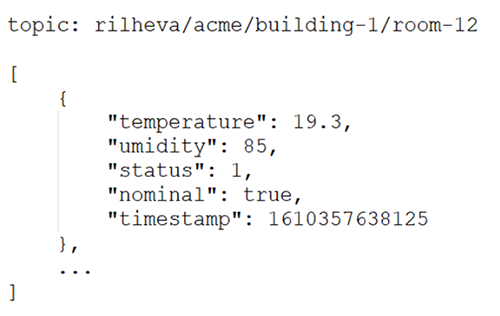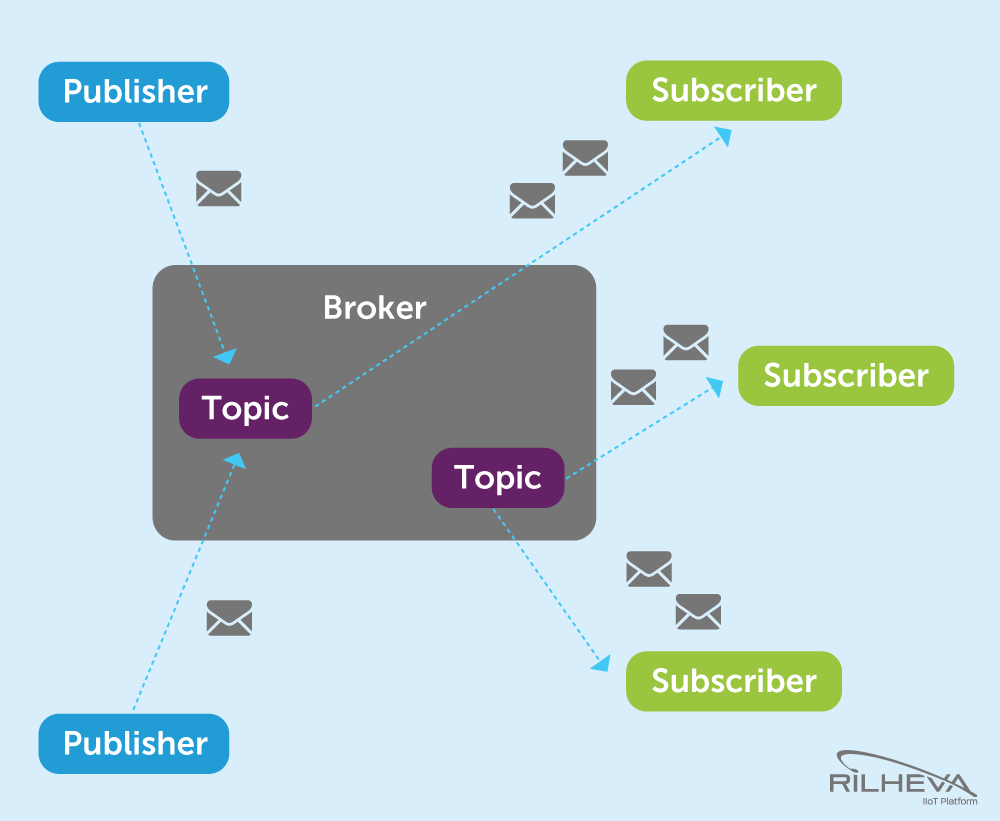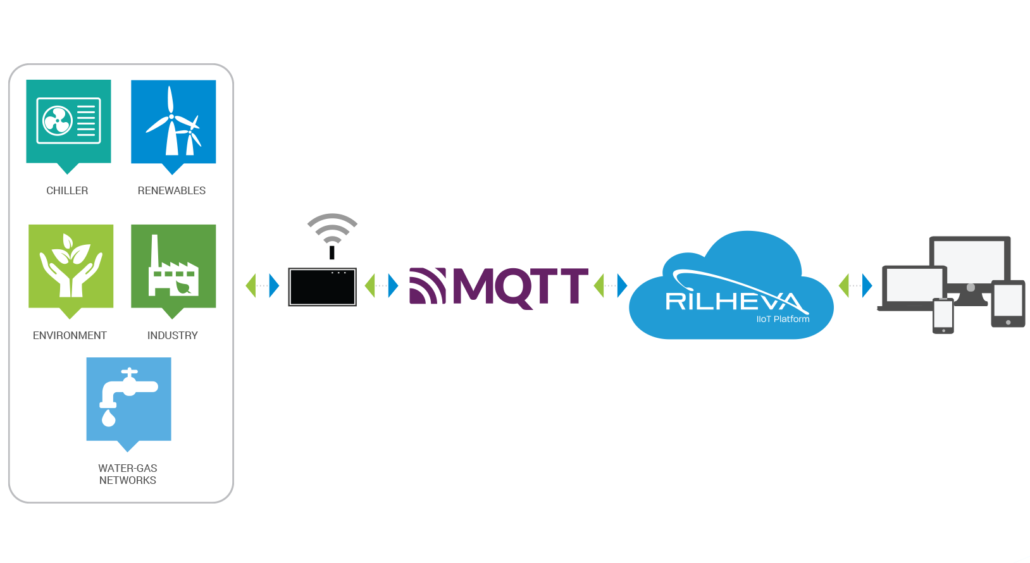Complete your MQTT project
in a few minutes in just 3 simple steps
Rilheva IIoT Platform MQTT
What is MQTT and why to choose it
MQTT (Message Queuing Telemetry Transport) is a skinny and high-performance communication protocol to efficiently manage communication among machines. It’s widely spread across the industrial environment and is becoming a de facto standard for the Industrial IoT.
The main features of the MQTT protocol are: bandwidth-saving push communication, simplicity in the implementation and use of clients, and versatility in use.
These peculiarities make it suitable for all those cases with low resources (memory and computing power) and bandwith.
Furthermore, it can manage communication on net not totally reliable in terms of connection stability and therefore subject to frequent interruptions.
MQTT communication is bidirectional: it grants both field data reading and commands sending to MQTT enabled devices.
MQTT protocol in BRIEF

How does MQTT work?
MQTT protocol adopts an asynchronous communication paradigm based on publication and subscription (publish/subscribe).
When A node communicates with B node, it’s not synchronous as a phone call (i.e. immediate exchanges)
On the contrary, in MQTT protocol a message is published by A node (publish) and is received – even after some time – by B node that has subscribed reception (subscribe).
By using MQTT protocol, message production and receipt are uncoupled, even from a temporal point of view.
It is therefore a very different operating mode from other protocols, such as HTTP protocol – used by the web – which is request-response type.
MQTT protocol message exchange is managed by a broker, a server that receives messages from publishers and delivers them to subscribers. The broker only delivers messages that refer to the selected topics.
Topics are categories in which messages are logically grouped into. A topic could group all climatic data of an established environment or operating parameters of a given plant.
A temperature sensor can be considered as a publisher: it provides the broker with data, only the one relating to a requested topic
The subscriber, e.g. a data collector, connects to the broker and filters topics of interest, including the temperature probe readings.
Once the broker receives a publication on a topic, it will send the relating message to all subscribers. In this case, the broker will send only data received from the temperature sensor.
Data are sent from publisher in the message body (payload) by using a format formerly established between publisher and subscriber, which usually depends on application type.
It is often used a JSON structure as in the following example:

Another technical relevant feature relates to QoS: for each client-broker connection, a different service quality (QoS) level can be set.
0 (at most once): message is sent only once, with no receipt confirmation.
1 (at least once): message is sent several times until receipt confirmation is achieved
2 (exactly once): message is sent only once with receipt confirmation

PUBLISHER sends (publishes) a message on a TOPIC (subject)
SUBSCRIBER is a consumer that waits (subscribe) for messages published on a given TOPIC
BROKER (message sorting server) manages matching between SUBSCRIBER and PUBLISHER and relating message dispatching
In brief, to set up an MQTT-based IoT solution you need to have:
- A broker which can fit to your connection (internet accessible server)
- An IoT gateway embedded with MQTT client
- The IoT gateway safely connected to broker with the appropriate authentication credentials
- Iot Gateway given topic data published, by sending a payload which must be processable by the device that is in charge of receiving it
- Any possible command received by subscribing a different specific topic
- An IoT platform to save, process and publish data provided by the gateway
Does it seem too complicated?
Actually it is not so trivial…
Fortunately, you’re in the right place.
Rilheva vision has always been focused to simplify and let widely accessible the IoT technology, even the most complex one!
We have worked hard to simplify the whole communicating and setting process, providing you with guided tools to let you reach your goal in terms of minutes, not months.
Below, 3 simple steps to start creating value from your plant data:
You’re done!
From now your IoT sensor/gateway data will flow from the field to the cloud and from the cloud to your smartphone in less than 1 second.
This with the all the power from Rilheva IIoT Platform, the agile WEB Scada that since 2004 drives both companies and people through the digital transformation of their business process.
You need to start an MQTT based IoT project and you don’t know where to start from? Everything seems so complicated and impossible?
and test our MQTT Rilheva service.
You will be amazed how simple it is to complete your MQTT project using Rilheva Platform!

